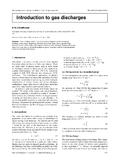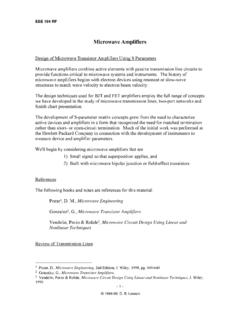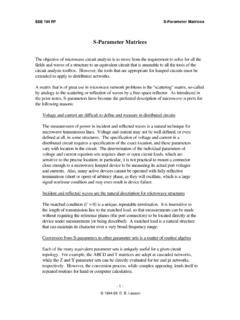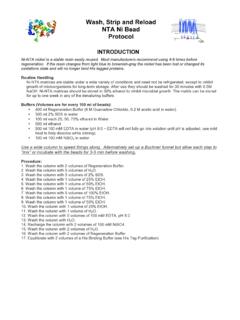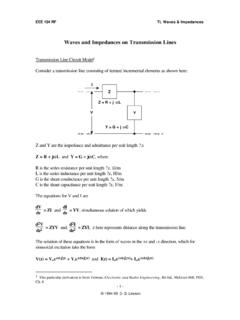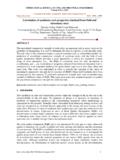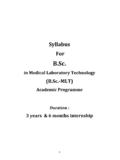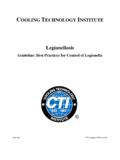Transcription of Laboratory #6: Dipole and Monopole Antenna Design
1 EEE 171 Lab #6 1 Laboratory #6: Dipole and Monopole Antenna Design I. OBJECTIVES Design several lengths of Dipole antennas. Design appropriate impedance matching networks for those antennas. The antennas will be fed by a BALUN (balanced-unbalanced transformer) for balanced excitation. The impedance matching network will be placed between the 50 source and the balun. II. INTRODUCTION A general purpose Dipole Antenna (long thin wire Antenna ) with height h1 = h2 = L/2, where L is the total length of the Antenna is shown in Figure 1. Figure 1. Thin Linear Antenna of Total Length h2 + h1 The Dipole Antenna is constructed with two thin linear elements that are symmetrically fed at the center by a balanced two-wire transmission line. The antennas may be of any length, but it is assumed that the current distribution is sinusoidal. Current-distribution measurements indicate that this is a good assumption provided that the Antenna is thin: That is, when the conductor diameter is less than /100.
2 The current of the center fed Antenna of length L at any point z on the Antenna is: ()22oLIzIsinz = . (1) EEE 171 Lab #6 2 The far- field electric and magnetic field of a Dipole Antenna is determined by integrating the fields for an infinitesimal Dipole of length dz at a distance r from the Antenna 2oojZIsindzdEr = (2) and 2ojIsindzdHr = . (3) The value of the magnitude for the magnetic field H for the entire length of the Antenna is the integral Equation (3) over the length of the entire Antenna : 22 LLdHdH = . (4) This yields the magnetic field for an arbitrary length Dipole antennas in the far- field : ()222jrjtoLcosLcoscosjIeeHrsin = . (5) The corresponding electric field for an arbitrary length Dipole antennas in the far- field is: ()222jrjtooLcosLcoscosjZIeeErsin = . (6) Single-ended sources may be used without baluns when Monopole antennas are used. When placed over a conducting ground plane, a quarter-wave Monopole Antenna excited by a source at its base as shown in Figure 2 exhibits the same radiation pattern in the region above the ground as a half-wave Dipole in free space.
3 This is because, from image theory, the conducting plane can be replaced with the image of a /4 Monopole . However, the Monopole can only radiate above the ground plane. Therefore, the radiated power is limited to 0 /2. Hence the /4 Monopole radiates only half as much power as the Dipole . EEE 171 Lab #6 3 (a) (b) Figure 2. (a) Quarter-Wave Monopole Antenna . (b) Equivalent Half-Wave Dipole Antenna Note that the Monopole Antenna can accommodate single-ended signal feed. A MathCAD routine for determining the radiation pattern (Electric field ) of a 3 meter Dipole Antenna operating at 100 MHz is shown below. Conducting Plane /4 IImageConducting Plane /4 IImage EEE 171 Lab #6 4 EEE 171 Lab #6 5 To find the Radiation Resistance Rrad for a Dipole Antenna , we apply the average radiated power equation, 22oradIRP=. (7) The power radiated is defined as {}222200121212r*oPSdsReZHHdsHdsHrsindd = = = = (8) Simplified, radiation resistance for an arbitrary length Dipole Antenna is, ()22022oradLcosLcoscosZRsindsin =.
4 (9) The radiation resistances for a common Dipole antennas are: Short Dipole : 2790radLR = Half-Wave Dipole : Rrad = 73 Quarter-Wave Monopole : Rrad = II. PROCEDURE A. Design and plot the radiation pattern of a half-wave Dipole Antenna operating at 400 MHz. Plot the radiation pattern for on MathCAD. B. Design and analyze a quarter-wave Dipole Antenna operating at 400 MHz. EEE 171 Lab #6 6 Plot the radiation pattern for a full-wave Dipole Antenna using MathCad. Determine the Antenna 's resistance. C. Design and analyze a quarter-wave Monopole Antenna operating at 400 MHz. Plot the radiation pattern for a full-wave Dipole Antenna using MathCad. Determine the Antenna 's resistance. D. Design impedance matching networks for the two antennas in Parts A, B, and C. Use both quarter-wave impedance transformers and single or double stub tuners. E. Compare the results

